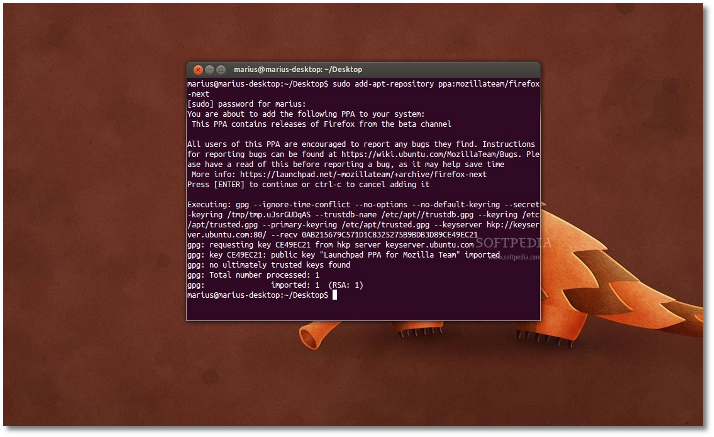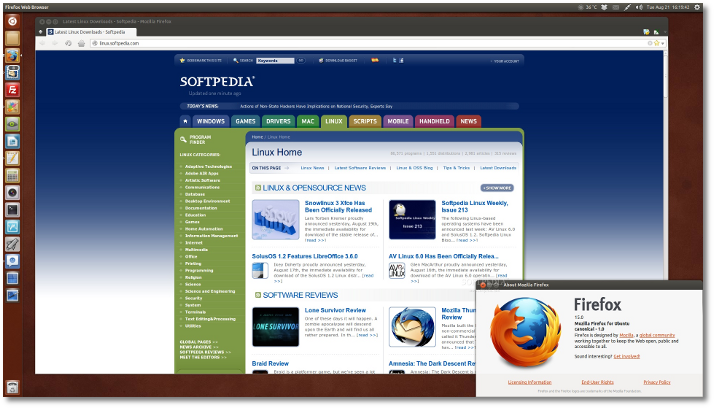Tuesday, August 21, 2012
Nautilus 3.6 Beta Brings New Features and Improvements
The GNOME developers behind the Nautilus project (now known as Files) announced earlier today, August 21st, that the Beta release of the upcoming Nautilus 3.6 is now available for download and testing.
Nautilus 3.6 Beta is a development release, which brings many interesting and noteworthy features and improvements, such as:
· Both Gear and Application menus were reorganized;
· Added a menu to view actions;
· Added a View options selector on the toolbar;
· Added cluebars for Scripts and Templates special folders;
· Added the ability to reorder bookmarks;
· Improved strings in Autorun prompt;
· Improved the image Properties page;
· Improved the Permissions page in the Properties window;
· Improved the error message strings;
· Improved the Bookmarks dialog's layout;
· Added per-window view mode and zoom level;
· Double quotes are now used for filenames, instead of ASCII quotes.
Nautilus 3.6 Beta is part of the GNOME 3.6 upgrade, which will be available on September 18th, 2012.
Download Nautilus 3.6 Beta
Bridge Linux GNOME 2012.8 Drops Cinnamon
Bridge Linux GNOME, an Arch derivative operating system that includes a GUI and standard applications, is now at version 2012.8.
According to the developers of Bridge Linux, the GNOME version of this distribution also features GRUB2 as the default bootloader.
Just like the other editions developed by Miller Technologies, Bridge Linux and Bridge Linux Light, the GNOME version shares all their features, such as mounting drives without password in file manager, French and Turkish language support, and much more.
Bridge Linux GNOME 2012.8 has only two specific changes: the desktop environment Cinnamon has been removed for stability purposes and the number of AUR packages have been decreased.
A complete list of changes and fixes can be found in the official announcement.
Download Bridge Linux GNOME 2012.8
Phoronix Test Suite 4.0.1 Available for Download
Phoronix Test Suite 4.0.1, codenamed Suldal, has been announced today, August 21st, by Michael Larabel.
Phoronix Test Suite 4.0.1 is a maintenance release of the Suldal release, bringing the following changes:
• Shortened test profile versions inputted by user to be expanded to matching latest version in stream is now allowed;
• list-unsupported-tests option for debugging purposes has been added;
• Subversion as a PTS External Dependency has been added;
• git as a PTS External Dependency has been added;
• Memory RAM DIMM count detection in select configurations has been fixed.
A complete list of changes and updates can be found in the official announcement.
The Phoronix Test Suite allows individuals and organizations to carry out automated and quantitative test cases and benchmarks in a fully automated and standardized manner using a unique open-source testing architecture.
Download Phoronix Test Suite 4.0.1
How to Install Firefox 15 on Ubuntu
The following tutorial will teach Ubuntu users how to "unofficially" update their systems to the Mozilla Firefox 15.0 web browser.
Mozilla Firefox 15 has not yet been released, it is in Beta state at the moment, but it will bring features such as initial native support for PDF files, support for SPDY networking protocol v3, better performance by enchancing WebGL (including compressed textures), better memory usage for add-ons, and much more.
Canonical will most likely update its supported Ubuntu operating system to Firefox 15 as soon as Mozilla releases it at the end of the month, but if you want it now, follow our step-by-step (with screenshots) tutorial.
Mozilla Firefox 15.0 can be installed in the following Ubuntu operating systems: Ubuntu 12.04 LTS (Precise Pangolin), Ubuntu 11.10 (Oneiric Ocelot), Ubuntu 11.04 (Natty Narwhal) and Ubuntu 10.04 LTS (Lucid Lynx).
Step 1 - Add the Firefox 15.0 repository
No matter what Ubuntu operating system (see above supported OSes) you are running, open a terminal and paste the following command:
sudo add-apt-repository ppa:mozillateam/firefox-next
 |
Hit the Enter key, type your password when asked and hit the Enter key. Hit Enter again when asked.
Don't close the terminal window! Proceed to the next step.
Step 2 - Install Firefox 15.0 on Ubuntu
Now paste the following command in the same terminal window:
sudo apt-get update && sudo apt-get install -y firefox
Your current Firefox installation will be overwritten. Wait for the installation to finish and close the terminal window.
That's it! The new Mozilla Firefox 15.0 is now fully installed in your Ubuntu machine. You'll need to restart Firefox for the changes to take effect.
 |
In time, your Mozilla Firefox web browser will automatically upgrade to newer versions, so make sure you update your system regularly.
If you have problems with the tutorial, do not hesitate to comment below!
Etichete:
FireFox,
Linux,
Mozilla,
Ubuntu,
Web Browser
Manjaro Linux 0.8.0
Philip Müller has announced the release of Manjaro Linux 0.8.0, a user-friendly desktop distribution based on Arch Linux and featuring the latest Xfce desktop: "We are proud to announce our default Manjaro edition featuring Xfce 4.10, Linux kernel 3.4.9, X.Org 7.6 with X.Org Server 1.12.3 and GCC 4.7.1. Manjaro Linux targets beginners and advanced users at the same time. We provide user interface tools and scripts to make life easier. Manjaro supports NVIDIA's Optimus technology out of the box. You can choose between Nouveau/Intel or NVIDIA/Intel drivers combination. Manjaro hardware detection tool will configure your graphic cards automatically and with help of Bumblebee bbswitch it is possible to switch to your desired graphic mode." Here is the release announcement. Download (MD5): manjaro-xfce-0.8.0-i686.iso (633MB), manjaro-xfce-0.8.0-x86_64.iso (692MB). Separate editions showcasing the GNOME 3 desktop with the Cinnamon shell and KDE 4.8.4 are also available.
Etichete:
Arch Linux,
Nvidia,
Xfce
Subscribe to:
Comments (Atom)




